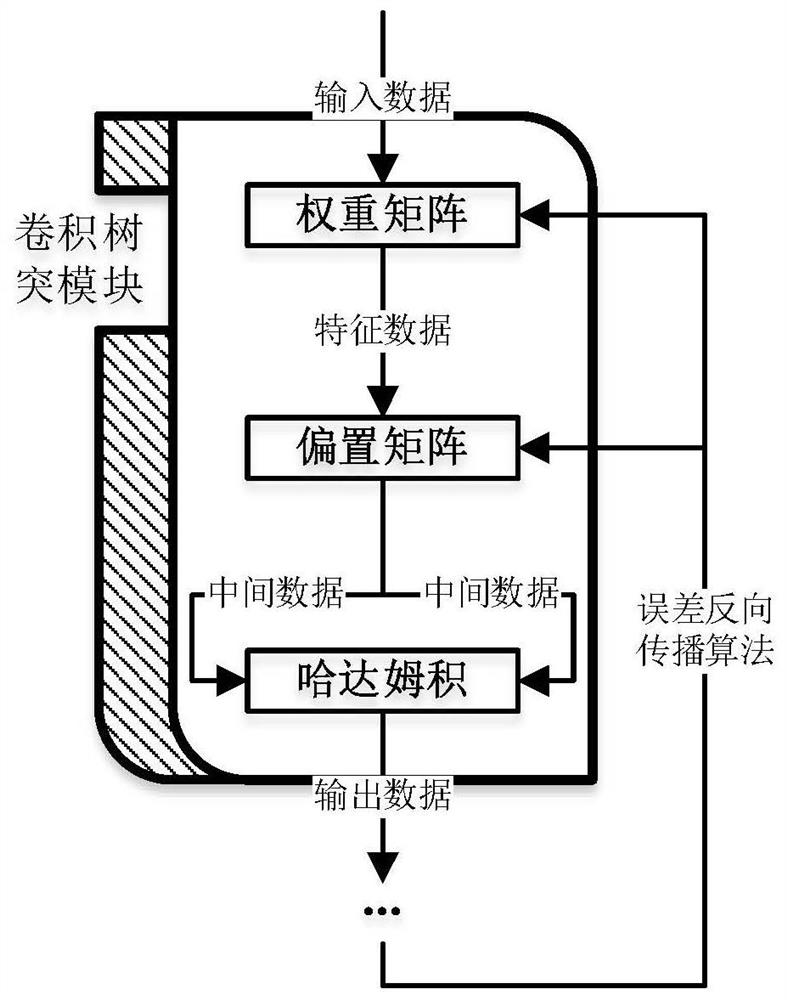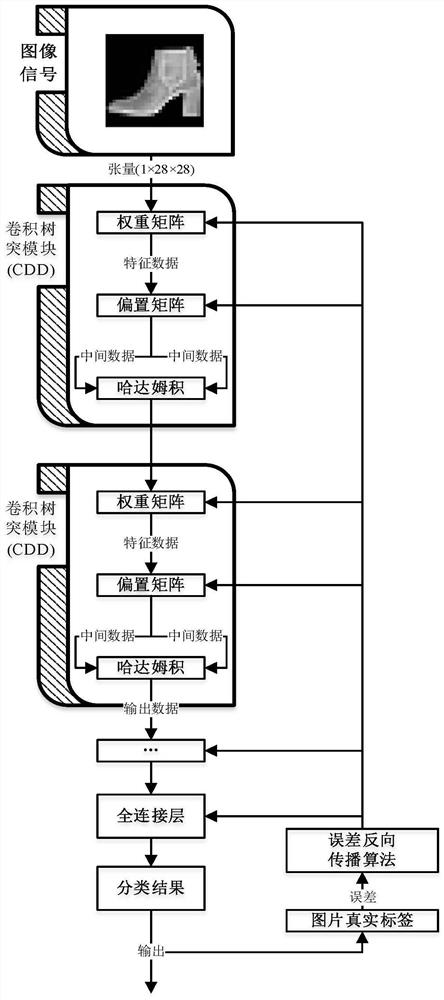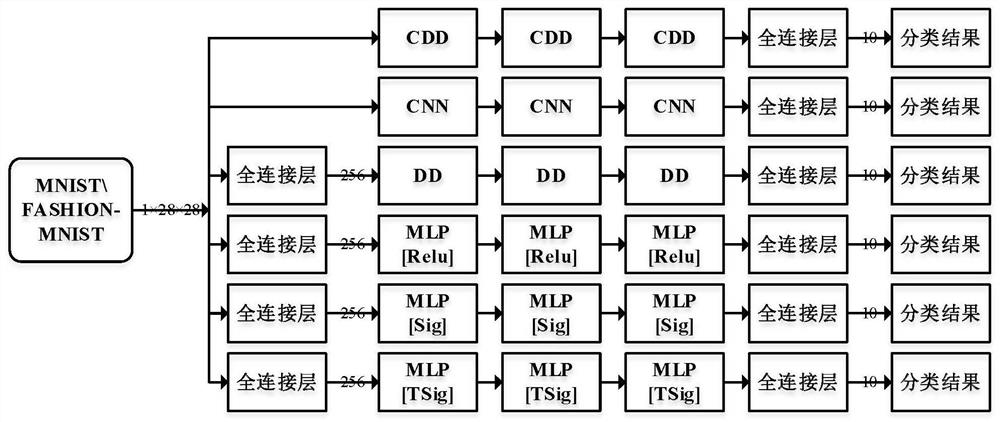Convolutional dendritic method for extracting feature logic for classification
A feature extraction and convolution technology, applied in the field of artificial intelligence, can solve problems such as incapability of feature extraction, difficulty in embedding into other networks, loss of logical relationships, etc.
- Summary
- Abstract
- Description
- Claims
- Application Information
AI Technical Summary
Problems solved by technology
Method used
Image
Examples
Embodiment Construction
[0034] In order to make the object, technical solution and advantages of the present invention more clear, the exemplary embodiments of the present invention will be further described in detail below in conjunction with the accompanying drawings. It should be understood that the specific embodiments described here are only used to explain the present invention, not to limit the present invention. In addition, the technical features involved in the various embodiments of the present invention described below can be combined with each other as long as they do not constitute a conflict with each other. The classification target involved in the aforementioned technical solution can be a tensor of any dimension and size. The input data of a 3×3×1 tensor is used as an example below to illustrate a convolution of the present invention for extracting feature logic for classification. The dendritic method can be applied to the field of artificial intelligence, such as image signals or ...
PUM
 Login to View More
Login to View More Abstract
Description
Claims
Application Information
 Login to View More
Login to View More - R&D
- Intellectual Property
- Life Sciences
- Materials
- Tech Scout
- Unparalleled Data Quality
- Higher Quality Content
- 60% Fewer Hallucinations
Browse by: Latest US Patents, China's latest patents, Technical Efficacy Thesaurus, Application Domain, Technology Topic, Popular Technical Reports.
© 2025 PatSnap. All rights reserved.Legal|Privacy policy|Modern Slavery Act Transparency Statement|Sitemap|About US| Contact US: help@patsnap.com



